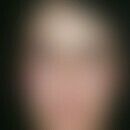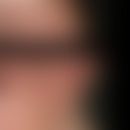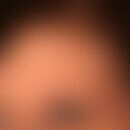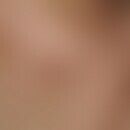HistoryThis section has been translated automatically.
Colomb D, Racouchot J, Vittoni F., 1973; < 30 cases have been published since the initial description in 1973 (Steffes WE et al. 2015).
DefinitionThis section has been translated automatically.
Self-healing juvenile cutaneous mucinosis (SJCM) is a very rare, acute, benign and self-limiting disease characterized by the sudden appearance of asymptomatic papules and plaques. Febrile, even arthritic accompanying components are possible.
You might also be interested in
ClassificationThis section has been translated automatically.
Self-healing juvenile cutaneous mucinosis (SHJCM) is, in addition to
- the classic papular mucinosis
- acral persistent papular mucinosis
- cutaneous infantile m ucinosis
- nodular mucinosis
one of 5 subtypes of localized papular mucinosis (see alsocutaneous mucinosis).
EtiopathogenesisThis section has been translated automatically.
The etiopathogenesis of childhood cutaneous mucinosis is unclear. Normally, proteoglycans (mucin) are produced in only small amounts by dermal fibroblasts. It is postulated (as in other mucinoses as well) that the accumulation of mucin occurs through activation of dermal fibroblasts. The signal for increased formation of proteoglycans is possibly by autoantibodies, also by monoclonal or polyclonal immunoglobulins, by proinflammatory cytokines e.g. in viral infections, or also by a balance disturbance between production and degradation of mucins (Rongioletti F 2020). Since some cases with familial accumulation have also been described, a genetic factor is also discussed.
ManifestationThis section has been translated automatically.
1-17 years, with some cases described in early adulthood (de las Heras ME et al 1996).
LocalizationThis section has been translated automatically.
Preferably the trunk as well as the extremities are affected, more rarely also the capillitium, the face, the neck as well as the extremities.
Clinical featuresThis section has been translated automatically.
In most cases, inconspicuous, asymptomatic, mostly skin-colored to slightly reddish, smooth papules and plaques, 0.2 to 3.0 cm in size, appear without prodromes. An acute, febrile onset with arthralgias, muscle pain, and generalized weakness has also been described. In another case, reddish nodules developed acutely on the trunk and extremities, along with periorbital edema, arthritis, and arthralgias. The changes may also simulate juvenile dermatomyositis (Bishnoi A et al. 2020). An 8-year-old child treated for nephroblastoma during chemotherapy developed acute cutaneous mucinous nodules characteristic of self-healing juvenile cutaneous mucinosis (Wadee S et al 1994).
HistologyThis section has been translated automatically.
Focal accumulation of alcian blue-positive proteoglycans in the upper dermis, usually clearly demarcated from the normal dermis. This results in a reticular pattern of cellular accumulation. Features of proliferative fasciitis may also be present, including a myxoid stroma and gangliocyte-like giant cells (Nagaraj LV et al 2006).
Progression/forecastThis section has been translated automatically.
Although spontaneous complete regression of the lesions can be expected within a period of weeks to a few months, patients with SHJCM need long-term monitoring because of the possible development of dermato-rheumatologic diseases. The pathogenetic role of microbial pathogens should be further investigated (Luchsinger I et al. 2018).
Note(s)This section has been translated automatically.
Despite the rarity of this condition, it is important to keep SHJCM in mind as a differential diagnosis in pediatric patients who present with proliferating papules and nodules. Knowledge of this entity may prevent unnecessary diagnostic testing and aggressive treatment in the pediatric population with this self-limited disease.
Case report(s)This section has been translated automatically.
A healthy 14-month-old girl suddenly developed asymptomatic, skin-colored to slightly reddish, firm "nodules" on the capillitium, face, hands, axillae, lower legs, and abdomen. A skin biopsy revealed a well-circumscribed collection of mucin in the reticular dermis. Colloidal iron staining was positive. Serum protein electrophoresis, thyroid function tests, complete blood count, erythrocyte sedimentation rate, and antinuclear antibodies were normal except for lymphocytosis. Most skin lesions had resolved within 6 months of onset. (Carder KR et al 2003).
LiteratureThis section has been translated automatically.
- Abbas O et al. (2010) Asymptomatic papules and nodules on forehead and limbs. Self-healing juvenile cutaneous mucinosis (SHJCM). Clin Exp Dermatol 35:e76-8.
- Bishnoi A et al (2020) Self-healing juvenile cutaneous mucinosis, a sclerodermoid disorder simulating juvenile dermatomyositis: a case-based review. Rheumatol Int 40:1911-1920.
- Caputo R et al (1995) Self-healing juvenile cutaneous mucinosis. Arch Dermatol 131:459-461.
- Chan C et al (2018) Cutaneous mucinosis of infancy: report of a rare case and review of the literature. Dermatol Online J. 24:13030/qt75k5r526.
- Chen CW et al. (2009) Congenital cutaneous mucinosis with spontaneous regression: an atypical cutaneous mucinosis of infancy? Clin Exp Dermatol 34:804-807.
- Colomb D et al (1973) Mucinosis of regressive development sana paraprotein in a girl. Lyon Med 230:474-475.
- de las Heras ME et al.(1996) Self-healing cutaneous mucinosis. Dermatology 192:268-270.
- Geagea C et al. (2019) Self-healing juvenile cutaneous mucinosis: A case report in the Middle East. Am J Case Rep 20:65-69.
- Gonzalez-Ensenat MA et al (1997) Self-healing infantile familial cutaneous mucinosis. Pediatr Dermatol 14: 460-462.
- Luchsinger I et al (2018) Self-healing juvenile cutaneous mucinosis: clinical and histopathologic findings of 9 patients: the relevance of long-term follow-up. J Am Acad Dermatol 78:1164-1170.
- McAdam LP et al (1977) Papular mucinosis with myopathy, arthritis, and eosinophilia. A histopathologic study. Arthritis Rheum 20:989-996.
- Mir-Bonafé JM et al (2015) Cutaneous mucinosis of infancy: a rare congenital case with coexisting progressive, eruptive, and spontaneously involuting lesions. Pediatr Dermatol 32:e255-e258.
- Morreale C et al (2021) Cutaneous mucinosis of infancy: a rare case of joint involvement. Pediatr Rheumatol Online J 19:99.
- Nagaraj LV et al (2006) Self-healing juvenile cutaneous mucinosis: cases highlighting subcutaneous/fascial involvement. J Am Acad Dermatol 55:1036-1043.
- Rongioletti F et al (2001) Updated classification of papular mucinosis, lichen myxedematosus, and scleromyxedema. J Am Acad Dermatol 44:273-281.
- Steffes WE et al (2015) A case of self-healing juvenile cutaneous mucinosis. Dermatol Online J 21:13030/qt4fr15909.
- Wadee S et al (1994) Self-healing juvenile cutaneous mucinosis in a patient with nephroblastoma. Clin Exp Dermatol 19:90-93.
Incoming links (1)
Cutaneous mucinosis of infancy;Outgoing links (3)
Acral papular mucinosis; Cutaneous mucinosis of infancy; Mucinosis cutaneous (overview);Disclaimer
Please ask your physician for a reliable diagnosis. This website is only meant as a reference.





